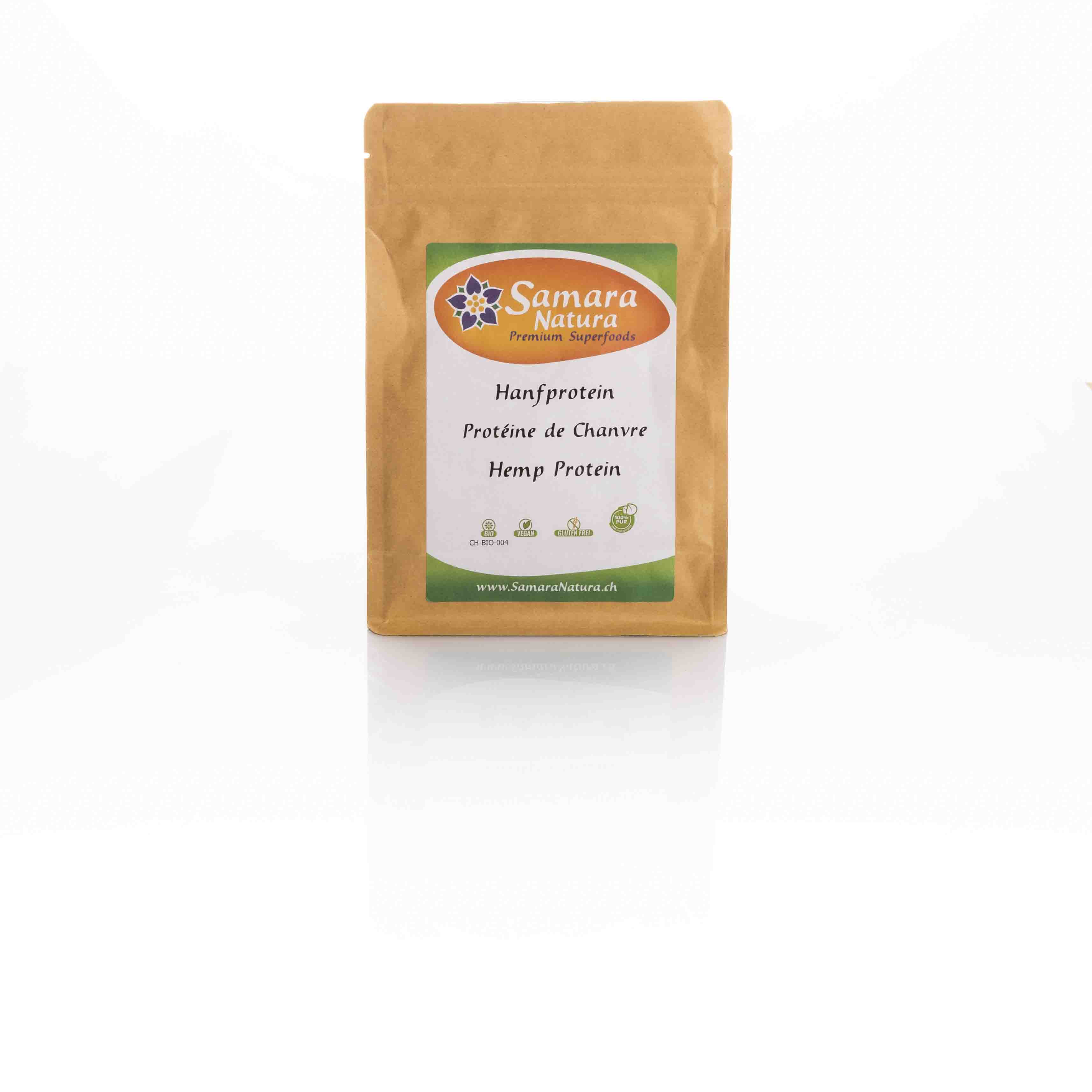| Quantity | Unit price | Base price |
|---|---|---|
| To 2 |
CHF 16.50*
|
CHF 6.60* / 100 Gramm |
| From 3 |
CHF 15.68*
|
CHF 6.27* / 100 Gramm |
Available, delivery time: 1-4 days
Product information "Hemp Protein Organic"
Update 12.12.2025: The hemp protein 65% (made from unroasted, hulled, Austrian organic hemp seeds) is now available again in both 250g and 500g sizes.
Hemp protein powder with 65% protein content (100% natural)
The powder contains vegetable protein with all the essential amino acids and is therefore a complete source of protein, providing all the vital protein building blocks that cannot be produced by the body itself. Hemp protein powder is obtained from hemp seeds after oil pressing, which are then finely ground and sieved.
Why consume hemp protein powder?
- Contains essential fatty acids, vitamins, minerals, fibre and lecithin in perfect balance for our body
- Gluten and lactose free
- Ideal component of a healthy diet and is therefore also popular with athletes, vegetarians and vegans
- Particularly easy for the body to utilise (conversion of hemp proteins into immunoglobulins of the immune system): The proteins found in edible hemp have a very similar molecular structure to human proteins
- Biological value of the protein in hemp: Comparable to that of eggs or meat, but free of cholesterol and unhealthy trans fatty acids
- One of the most nutritious and environmentally friendly foods on the planet: Hemp grows easily anywhere, requires no pesticides or herbicides
What makes our hemp protein powder special?
- The hemp seeds for our protein powder come from controlled organic cultivation. They are obtained from legal, officially authorised varieties that are cultivated in Austria without pesticides or agrochemicals.
- Obtained from hulled hemp seeds: As a result, our protein powder has one of the highest protein contents at 65%. The products of other suppliers generally contain between 45% and 50%.
- There are also clear differences in colour and taste: while hemp protein from unpeeled hemp seeds has a green colour and smells distinctly of hemp, our powder is yellowish and has only a subtle hemp aroma.
How to integrate hemp protein into your daily diet?
- Smoothies / juice / rice milk: add hemp protein powder to your drink
- Muesli or yoghurt: sprinkle hemp protein powder over muesli or yoghurt
- Baked goods: Use hemp protein powder to replace some of the flour in your baking recipes
- Protein bars: Make your own protein bars by mixing hemp protein powder with nuts, seeds and fruit
- Spreads: Add hemp protein powder to hummus, guacamole or other spreads
Use 1 to 3 tablespoons per day as required. This corresponds to approx. 10 - 30g of pure protein. Athletes usually consume their protein shake 30 minutes before and after training.
Nutritional values of hemp protein per 100 g (average)
Energy value 1511 kJ / 359kcal
Fat 7.1g
- of which saturated fatty acids 0.9g
- of which monounsaturated fatty acids 1.0g
- of which polyunsaturated fatty acids 5.2g
Carbohydrates 3.6g
- of which sugar 3.6g
Dietary fibre 9g
Protein 65g
Salt <0.01g
All information is subject to the usual fluctuations in natural products.
Login
2 reviews
10 September 2015 13:11
Sehr zufrieden
Ich möchte Ihnen noch gerne rückmelden, dass ich sowie meine Klienten sehr zufrieden sind mit Ihren Produkten, auch mit dem Hanfprotein-Pulver. A. K. Naturheilpraxis
30 July 2015 13:36
Werbung gemacht
Liebes Biosamara Team Ich habe für Sie erfolgreich Werbung gemacht. Neben meiner Familie haben und werden folgende Personen bei Ihnen bestellen: Monika S. Renée M. Viele Grüsse M.K.













